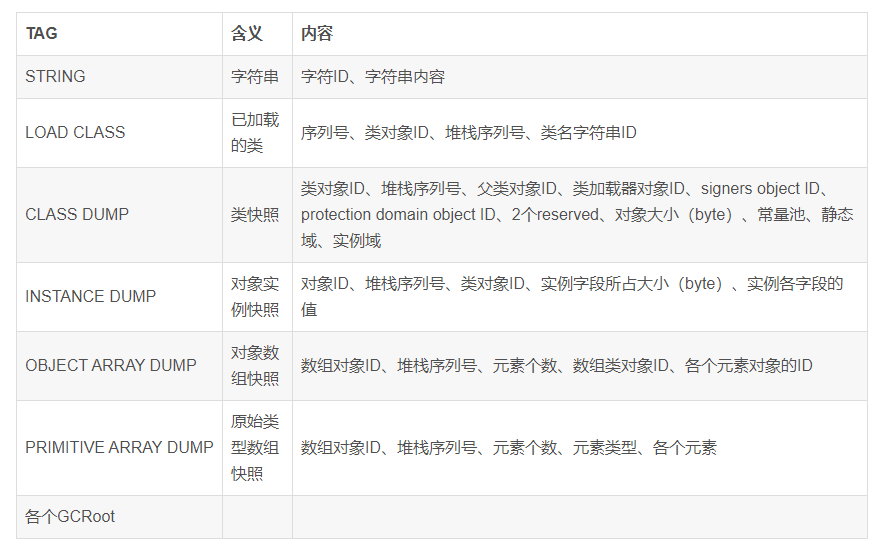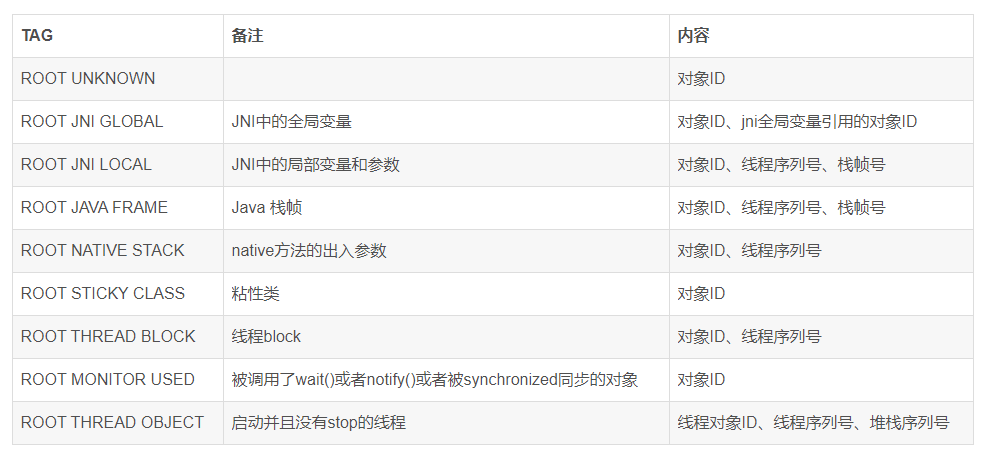本文介绍了开源Android内存泄漏监控工具LeakCanary2.0版本的实现原理,同时介绍了新版本新增的hprof文件解析模块的实现原理,包括hprof文件协议格式、部分实现源码等。
一、概述
LeakCanary是一款非常常见的内存泄漏检测工具。经过一系列的变更升级,LeakCanary来到了2.0版本。2.0版本实现内存监控的基本原理和以往版本差异不大,比较重要的一点变化是2.0版本使用了自己的hprof文件解析器,不再依赖于HAHA,整个工具使用的语言也由Java切换到了Kotlin。本文结合源码对2.0版本的内存泄漏监控基本原理和hprof文件解析器实现原理做一个简单地分析介绍。
LeakCanary官方链接:https://square.github.io/leakcanary/
1.1 新旧差异
1.1.1 .接入方法
新版: 只需要在gradle配置即可。
dependencies {
// debugImplementation because LeakCanary should only run in debug builds.
debugImplementation 'com.squareup.leakcanary:leakcanary-android:2.5'
}
旧版: 1)gradle配置;2)Application 中初始化 LeakCanary.install(this) 。
敲黑板:
1)Leakcanary2.0版本的初始化在App进程拉起时自动完成;
2)初始化源代码:
internal sealed class AppWatcherInstaller : ContentProvider() {
/**
* [MainProcess] automatically sets up the LeakCanary code that runs in the main app process.
*/
internal class MainProcess : AppWatcherInstaller()
/**
* When using the `leakcanary-android-process` artifact instead of `leakcanary-android`,
* [LeakCanaryProcess] automatically sets up the LeakCanary code
*/
internal class LeakCanaryProcess : AppWatcherInstaller()
override fun onCreate(): Boolean {
val application = context!!.applicationContext as Application
AppWatcher.manualInstall(application)
return true
}
//....
}
3)原理:ContentProvider的onCreate在Application的onCreate之前执行,因此在App进程拉起时会自动执行 AppWatcherInstaller 的onCreate生命周期,利用Android这种机制就可以完成自动初始化;
4)拓展:ContentProvider的onCreate方法在主进程中调用,因此一定不要执行耗时操作,不然会拖慢App启动速度。
1.1.2 整体功能
Leakcanary2.0版本开源了自己实现的hprof文件解析以及泄漏引用链查找的功能模块(命名为shark),后续章节会重点介绍该部分的实现原理。
1.2 整体架构

Leakcanary2.0版本主要增加了shark部分。
二、源码分析
LeakCananry自动检测步骤:
-
检测可能泄漏的对象;
-
堆快照,生成hprof文件;
-
分析hprof文件;
-
对泄漏进行分类。
2.1 检测实现
自动检测的对象包含以下四类:
-
销毁的Activity实例
-
销毁的Fragment实例
-
销毁的View实例
-
清除的ViewModel实例
另外,LeakCanary也会检测 AppWatcher 监听的对象:
AppWatcher.objectWatcher.watch(myDetachedView, "View was detached")
2.1.1 LeakCanary初始化

AppWatcher.config :其中包含是否监听Activity、Fragment等实例的开关;
Activity的生命周期监听:注册 Application.ActivityLifecycleCallbacks ;
Fragment的生命周期期监听:同样,注册** FragmentManager.FragmentLifecycleCallbacks** ,但Fragment较为复杂,因为Fragment有三种,即android.app.Fragment、androidx.fragment.app.Fragment、android.support.v4.app.Fragment,因此需要注册各自包下的FragmentManager.FragmentLifecycleCallbacks;
ViewModel的监听:由于ViewModel也是androidx下面的特性,因此其依赖androidx.fragment.app.Fragment的监听;
监听Application的可见性:不可见时触发HeapDump,检查存活对象是否存在泄漏。有Activity触发onActivityStarted则程序可见,Activity触发onActivityStopped则程序不可见,因此监听可见性也是注册 Application.ActivityLifecycleCallbacks 来实现的。
//InternalAppWatcher初始化
fun install(application: Application) {
......
val configProvider = { AppWatcher.config }
ActivityDestroyWatcher.install(application, objectWatcher, configProvider)
FragmentDestroyWatcher.install(application, objectWatcher, configProvider)
onAppWatcherInstalled(application)
}
//InternalleakCanary初始化
override fun invoke(application: Application) {
_application = application
checkRunningInDebuggableBuild()
AppWatcher.objectWatcher.addOnObjectRetainedListener(this)
val heapDumper = AndroidHeapDumper(application, createLeakDirectoryProvider(application))
val gcTrigger = GcTrigger.Default
val configProvider = { LeakCanary.config }
//异步线程执行耗时操作
val handlerThread = HandlerThread(LEAK_CANARY_THREAD_NAME)
handlerThread.start()
val backgroundHandler = Handler(handlerThread.looper)
heapDumpTrigger = HeapDumpTrigger(
application, backgroundHandler, AppWatcher.objectWatcher, gcTrigger, heapDumper,
configProvider
)
//Application 可见性监听
application.registerVisibilityListener { applicationVisible ->
this.applicationVisible = applicationVisible
heapDumpTrigger.onApplicationVisibilityChanged(applicationVisible)
}
registerResumedActivityListener(application)
addDynamicShortcut(application)
disableDumpHeapInTests()
}
2.1.2 如何检测泄漏
1)对象的监听者ObjectWatcher
ObjectWatcher 的关键代码:
@Synchronized fun watch(
watchedObject: Any,
description: String
) {
if (!isEnabled()) {
return
}
removeWeaklyReachableObjects()
val key = UUID.randomUUID()
.toString()
val watchUptimeMillis = clock.uptimeMillis()
val reference =
KeyedWeakReference(watchedObject, key, description, watchUptimeMillis, queue)
SharkLog.d {
"Watching " +
(if (watchedObject is Class<*>) watchedObject.toString() else "instance of ${watchedObject.javaClass.name}") +
(if (description.isNotEmpty()) " ($description)" else "") +
" with key $key"
}
watchedObjects[key] = reference
checkRetainedExecutor.execute {
moveToRetained(key)
}
}
关键类KeyedWeakReference:弱引用WeakReference和ReferenceQueue的联合使用,参考KeyedWeakReference的父类
WeakReference的构造方法。
这种使用可以实现如果弱引用关联的的对象被回收,则会把这个弱引用加入到queue中,利用这个机制可以在后续判断对象是否被回收。
2)检测留存的对象
private fun checkRetainedObjects(reason: String) {
val config = configProvider()
// A tick will be rescheduled when this is turned back on.
if (!config.dumpHeap) {
SharkLog.d { "Ignoring check for retained objects scheduled because $reason: LeakCanary.Config.dumpHeap is false" }
return
}
//第一次移除不可达对象
var retainedReferenceCount = objectWatcher.retainedObjectCount
if (retainedReferenceCount > 0) {
//主动出发GC
gcTrigger.runGc()
//第二次移除不可达对象
retainedReferenceCount = objectWatcher.retainedObjectCount
}
//判断是否还有剩余的监听对象存活,且存活的个数是否超过阈值
if (checkRetainedCount(retainedReferenceCount, config.retainedVisibleThreshold)) return
....
SharkLog.d { "Check for retained objects found $retainedReferenceCount objects, dumping the heap" }
dismissRetainedCountNotification()
dumpHeap(retainedReferenceCount, retry = true)
}
检测主要步骤:
-
第一次移除不可达对象:移除** ReferenceQueue** 中记录的KeyedWeakReference 对象(引用着监听的对象实例);
-
主动触发GC:回收不可达的对象;
-
第二次移除不可达对象:经过一次GC后可以进一步导致只有WeakReference持有的对象被回收,因此再一次移除ReferenceQueue 中记录的KeyedWeakReference 对象;
-
判断是否还有剩余的监听对象存活,且存活的个数是否超过阈值;
-
若满足上面的条件,则抓取Hprof文件,实际调用的是android原生的Debug.dumpHprofData(heapDumpFile.absolutePath) ;
-
启动异步的HeapAnalyzerService 分析hprof文件,找到泄漏的GcRoot链路,这个也是后面的主要内容。
//HeapDumpTrigger
private fun dumpHeap(
retainedReferenceCount: Int,
retry: Boolean
) {
....
HeapAnalyzerService.runAnalysis(application, heapDumpFile)
}
2.2 Hprof 文件解析
解析入口:
//HeapAnalyzerService
private fun analyzeHeap(
heapDumpFile: File,
config: Config
): HeapAnalysis {
val heapAnalyzer = HeapAnalyzer(this)
val proguardMappingReader = try {
//解析混淆文件
ProguardMappingReader(assets.open(PROGUARD_MAPPING_FILE_NAME))
} catch (e: IOException) {
null
}
//分析hprof文件
return heapAnalyzer.analyze(
heapDumpFile = heapDumpFile,
leakingObjectFinder = config.leakingObjectFinder,
referenceMatchers = config.referenceMatchers,
computeRetainedHeapSize = config.computeRetainedHeapSize,
objectInspectors = config.objectInspectors,
metadataExtractor = config.metadataExtractor,
proguardMapping = proguardMappingReader?.readProguardMapping()
)
}
关于Hprof文件的解析细节,就需要牵扯到Hprof二进制文件协议:
通过阅读协议文档,hprof的二进制文件结构大概如下:

解析流程:

fun analyze(
heapDumpFile: File,
leakingObjectFinder: LeakingObjectFinder,
referenceMatchers: List<ReferenceMatcher> = emptyList(),
computeRetainedHeapSize: Boolean = false,
objectInspectors: List<ObjectInspector> = emptyList(),
metadataExtractor: MetadataExtractor = MetadataExtractor.NO_OP,
proguardMapping: ProguardMapping? = null
): HeapAnalysis {
val analysisStartNanoTime = System.nanoTime()
if (!heapDumpFile.exists()) {
val exception = IllegalArgumentException("File does not exist: $heapDumpFile")
return HeapAnalysisFailure(
heapDumpFile, System.currentTimeMillis(), since(analysisStartNanoTime),
HeapAnalysisException(exception)
)
}
return try {
listener.onAnalysisProgress(PARSING_HEAP_DUMP)
Hprof.open(heapDumpFile)
.use { hprof ->
val graph = HprofHeapGraph.indexHprof(hprof, proguardMapping)//建立gragh
val helpers =
FindLeakInput(graph, referenceMatchers, computeRetainedHeapSize, objectInspectors)
helpers.analyzeGraph(//分析graph
metadataExtractor, leakingObjectFinder, heapDumpFile, analysisStartNanoTime
)
}
} catch (exception: Throwable) {
HeapAnalysisFailure(
heapDumpFile, System.currentTimeMillis(), since(analysisStartNanoTime),
HeapAnalysisException(exception)
)
}
}
LeakCanary在建立对象实例Graph时,主要解析以下几种tag:

涉及到的GCRoot对象有以下几种:

2.2.1 构建内存索引(Graph内容索引)
LeakCanary会根据Hprof文件构建一个HprofHeapGraph 对象,该对象记录了以下成员变量:
interface HeapGraph {
val identifierByteSize: Int
/**
* In memory store that can be used to store objects this [HeapGraph] instance.
*/
val context: GraphContext
/**
* All GC roots which type matches types known to this heap graph and which point to non null
* references. You can retrieve the object that a GC Root points to by calling [findObjectById]
* with [GcRoot.id], however you need to first check that [objectExists] returns true because
* GC roots can point to objects that don't exist in the heap dump.
*/
val gcRoots: List<GcRoot>
/**
* Sequence of all objects in the heap dump.
*
* This sequence does not trigger any IO reads.
*/
val objects: Sequence<HeapObject> //所有对象的序列,包括类对象、实例对象、对象数组、原始类型数组
val classes: Sequence<HeapClass> //类对象序列
val instances: Sequence<HeapInstance> //实例对象数组
val objectArrays: Sequence<HeapObjectArray> //对象数组序列
val primitiveArrays: Sequence<HeapPrimitiveArray> //原始类型数组序列
}
为了方便快速定位到对应对象在hprof文件中的位置,LeakCanary提供了内存索引HprofInMemoryIndex :
-
建立字符串索引hprofStringCache(Key-value):key是字符ID,value是字符串;
作用: 可以根据类名,查询到字符ID,也可以根据字符ID查询到类名。
-
建立类名索引classNames(Key-value):key是类对象ID,value是类字符串ID;
作用: 根据类对象ID查询类字符串ID。
-
建立实例索引**instanceIndex(**Key-value):key是实例对象ID,value是该对象在hprof文件中的位置以及类对象ID;
作用: 快速定位实例的所处位置,方便解析实例字段的值。
-
建立类对象索引classIndex(Key-value):key是类对象ID,value是其他字段的二进制组合(父类ID、实例大小等等);
作用: 快速定位类对象的所处位置,方便解析类字段类型。
-
建立对象数组索引objectArrayIndex(Key-value):key是类对象ID,value是其他字段的二进制组合(hprof文件位置等等);
作用: 快速定位对象数组的所处位置,方便解析对象数组引用的对象。
-
建立原始数组索引primitiveArrayIndex(Key-value):key是类对象ID,value是其他字段的二进制组合(hprof文件位置、元素类型等等);
2.2.2 找到泄漏的对象
1)由于需要检测的对象被
com.squareup.leakcanary.KeyedWeakReference 持有,所以可以根据
com.squareup.leakcanary.KeyedWeakReference 类名查询到类对象ID;
2) 解析对应类的实例域,找到字段名以及引用的对象ID,即泄漏的对象ID;
2.2.3找到最短的GCRoot引用链
根据解析到的GCRoot对象和泄露的对象,在graph中搜索最短引用链,这里采用的是广度优先遍历的算法进行搜索的:
//PathFinder
private fun State.findPathsFromGcRoots(): PathFindingResults {
enqueueGcRoots()//1
val shortestPathsToLeakingObjects = mutableListOf<ReferencePathNode>()
visitingQueue@ while (queuesNotEmpty) {
val node = poll()//2
if (checkSeen(node)) {//2
throw IllegalStateException(
"Node $node objectId=${node.objectId} should not be enqueued when already visited or enqueued"
)
}
if (node.objectId in leakingObjectIds) {//3
shortestPathsToLeakingObjects.add(node)
// Found all refs, stop searching (unless computing retained size)
if (shortestPathsToLeakingObjects.size == leakingObjectIds.size) {//4
if (computeRetainedHeapSize) {
listener.onAnalysisProgress(FINDING_DOMINATORS)
} else {
break@visitingQueue
}
}
}
when (val heapObject = graph.findObjectById(node.objectId)) {//5
is HeapClass -> visitClassRecord(heapObject, node)
is HeapInstance -> visitInstance(heapObject, node)
is HeapObjectArray -> visitObjectArray(heapObject, node)
}
}
return PathFindingResults(shortestPathsToLeakingObjects, dominatedObjectIds)
}
1)GCRoot对象都入队;
2)队列中的对象依次出队,判断对象是否访问过,若访问过,则抛异常,若没访问过则继续;
3)判断出队的对象id是否是需要检测的对象,若是则记录下来,若不是则继续;
4)判断已记录的对象ID数量是否等于泄漏对象的个数,若相等则搜索结束,相反则继续;
5)根据对象类型(类对象、实例对象、对象数组对象),按不同方式访问该对象,解析对象中引用的对象并入队,并重复2)。
入队的元素有相应的数据结构ReferencePathNode ,原理是链表,可以用来反推出引用链。
三、总结
Leakcanary2.0较之前的版本最大变化是改由kotlin实现以及开源了自己实现的hprof解析的代码,总体的思路是根据hprof文件的二进制协议将文件的内容解析成一个图的数据结构,当然这个结构需要很多细节的设计,本文并没有面面俱到,然后广度遍历这个图找到最短路径,路径的起始就是GCRoot对象,结束就是泄漏的对象。至于泄漏的对象的识别原理和之前的版本并没有差异。
作者:vivo 互联网客户端团队-Li Peidong